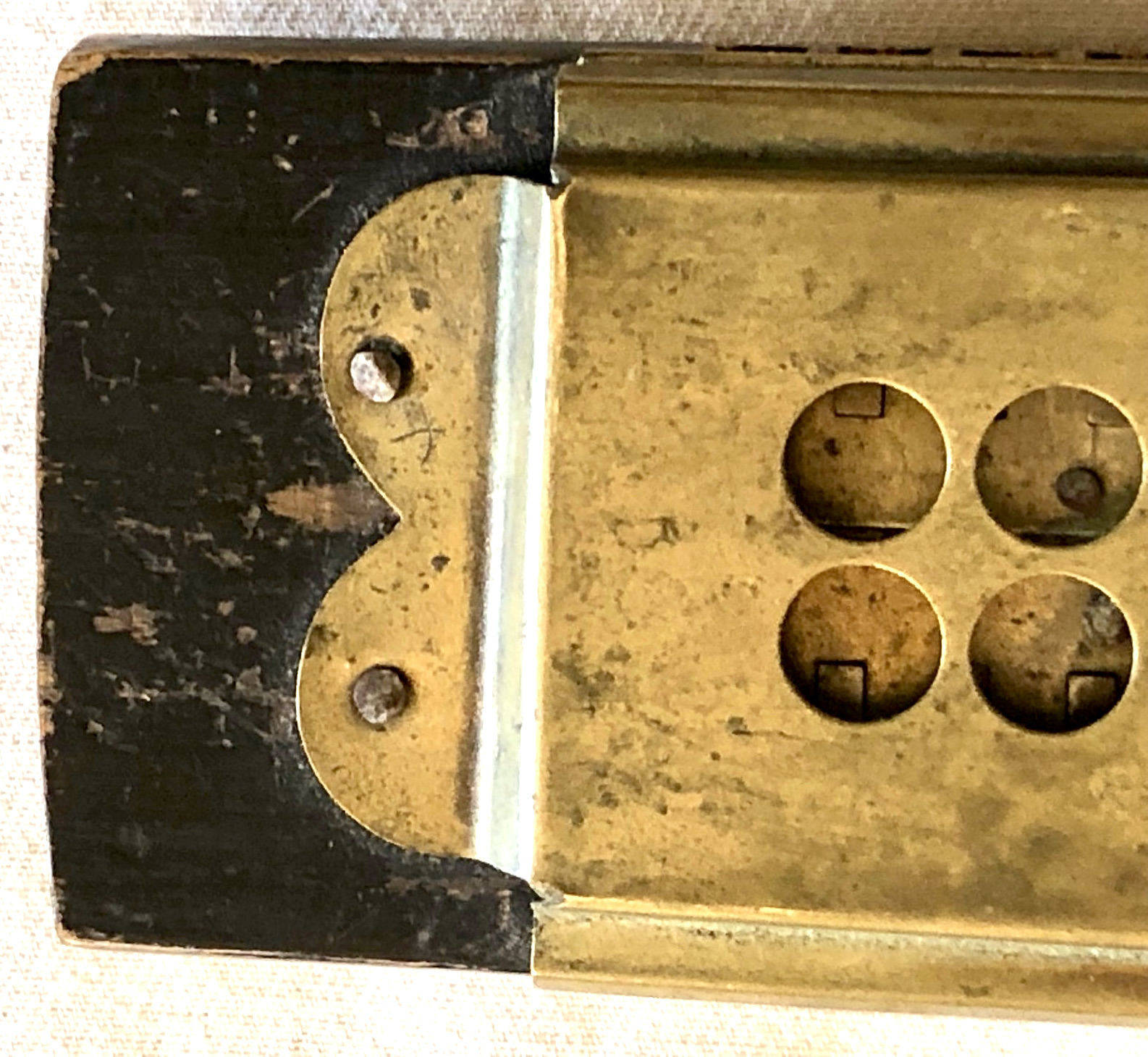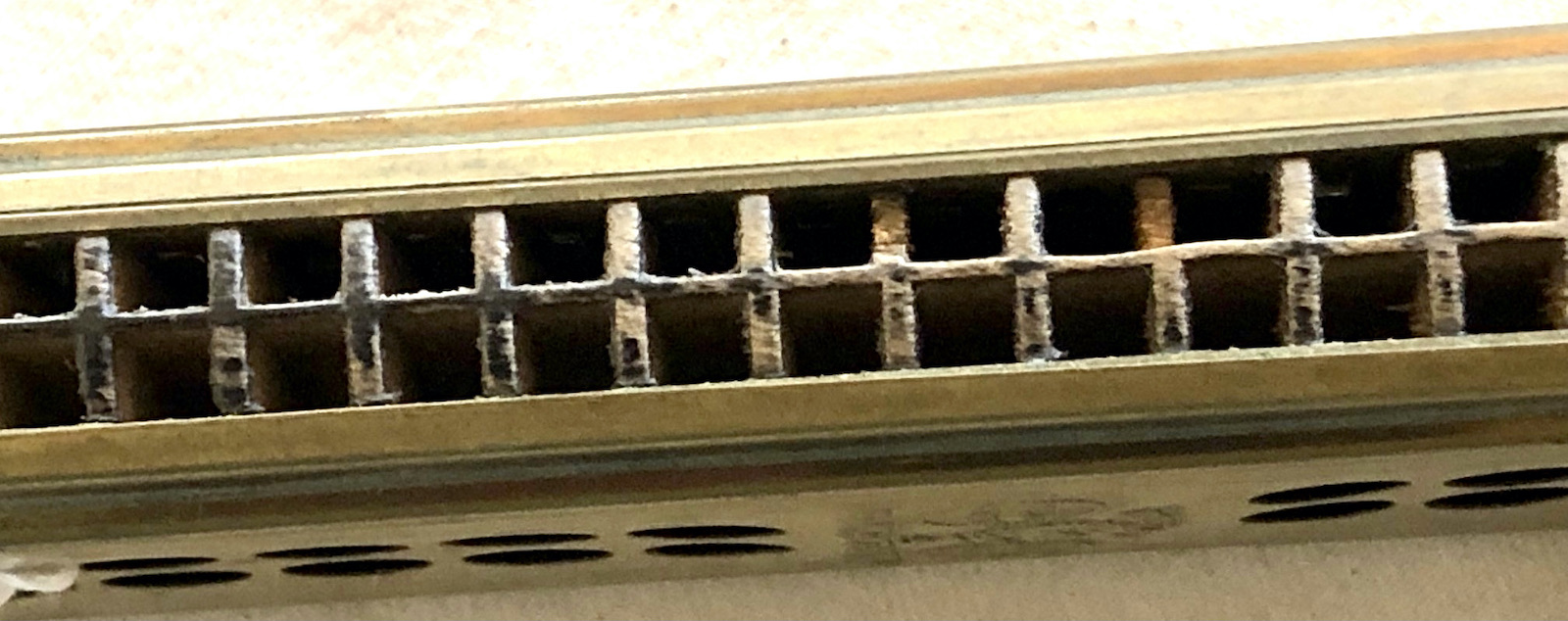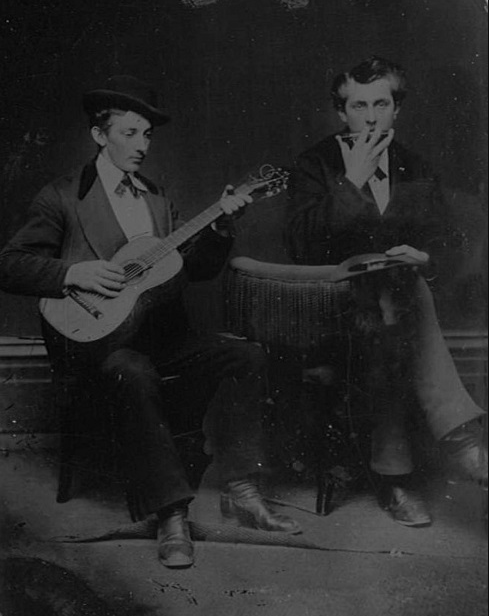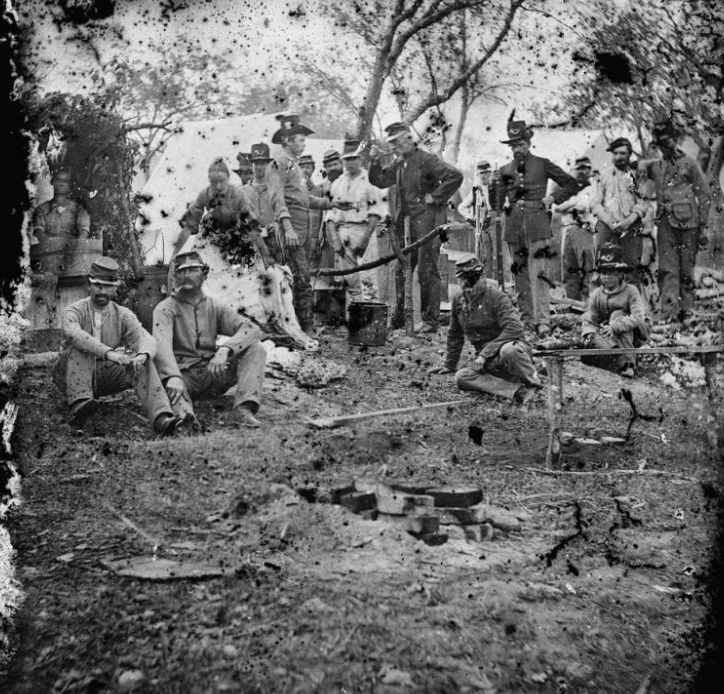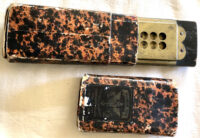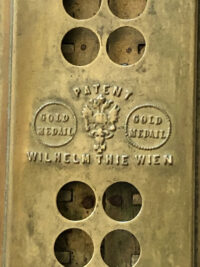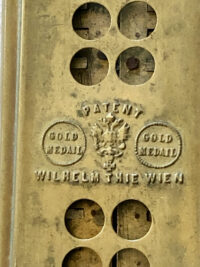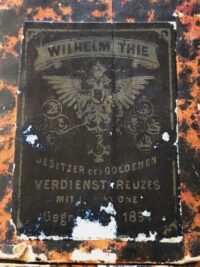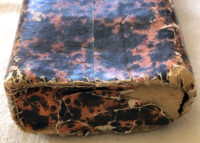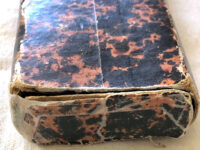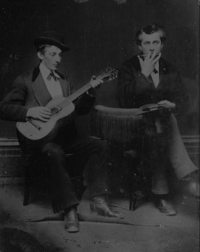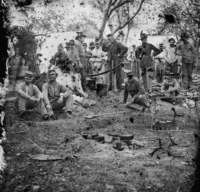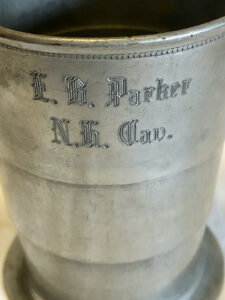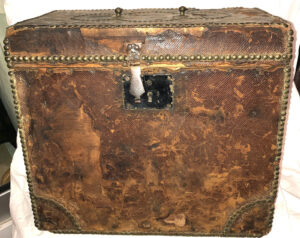Civil War Period Double Sided Tremolo Harmonica by Wilhelm Thie of Vienna in its Original Box
$550
Civil War Period Double Sided Tremolo Harmonica by Wilhelm Thie of Vienna in its Original Box – Those of us who are relic hunters are well aware of the vast number of brass harmonica plates that we all have excavated, over the years, from Civil War campsites. In consideration of the obvious proliferation of harmonica ownership by both Union and Confederate soldiers, it has always been a challenge to find a nonexcavated, original, period harmonica. This example is indeed the only one we have seen, and it remains in its original box. This large harmonica, is a double-sided, tremolo instrument, made by the well-known harmonica maker, Wilhelm Thie of Vienna, Austria. In the center, brass plate, between the two rows of sound holes, is stamped a 2-headed spread eagle with a crown above and the word “Patent” and “Wilhelm Thie Wien” below. Within two circles, flanking the eagles, is stamped “Gold Medal”. Wilhelm Thie invented the tremolo harmonica in 1857, in Austria. Export of Thie’s tremolo harmonicas, to the United States, began in 1862; a second production of the same type of tremolo harmonica, by Thie, was made for the 1876 World’s Fair, which heavily increased exportation to the United States. This later harmonica exhibits the date “1876”, embossed in the medallions where “Gold Medal” is seen on this earlier, Civil War period model. Not long after the 1876 World’s Fair, the famed Hohner Company heavily increased their product exportation to the United States, while Wilhelm Thie, unable to compete, slowed down production and resultant exportation, thereby making Thie harmonicas difficult to find, today. This rare harmonica is still contained within its original, pasteboard box, with the period Thie label firmly affixed to the front of the box. The box remains in overall good condition, with what appears to be a period repair to one end and at more recent taped repair to the other. The harmonica is in excellent condition, with a couple of small chips out of the wooden “teeth”.
Source: Harmonica Makers of Germany & Austria, by Haffner & Lindenmuller, Deutsches Harmonica Museum, publisher:
The Thie harmonica company (1834-1922) was founded in Vienna, Austria by Friedrich Wilhelm Thie (1803-1869), an immigrant toolmaker from Rathenow, Prussia.
Friederich’s son, Wilhelm Anton Thie (1833-1905) was a precision toolmaker, and is credited with inventing the “Vienna System” tremolo harmonica during his term as Thie company president. It’s the tremolo system used today, world-wide (Richter system note placement, but, with two reeds sounding the same pitch simultaneously, with one of the reeds slightly de-tuned).
Actually, it was one of his company harmonica tuners who discovered the tremolo harmonica effect. Wilhelm Thie and his unnamed employee were working on a Sunday to catch up on back orders, Wilhelm in the tool room, repairing tools, when he heard a sound from the next room, where the tuner was, and it was the sound that Thie wanted for his harmonicas, a sound like a violin tremolo.
Wilhelm rushed into the tuning room, and asked the tuner, “what have you done?” The tuner was frightened, and said he was tired of working on Sundays, so he tried a few tricks out of boredom.
With one glance, Wilhelm had seen the “silly experiment,” and he knew enough. He drew out his purse, gave the surprised worker a coin, and said, “We’ll stop work today. Take the coin, go to a pub, listen to a concert, and drink a beer for the well-being of our business.”
After the tuner left, Wilhelm designed the comb for the tremolo harmonica. The comb had each reed in a separate chamber, with one set of reeds on the top reed plate, and the other, slightly de-tuned reed set on the bottom reed plate. The two similar pitches were played together, blow in one pair of vertical holes, and draw in the next pair of vertical holes. The rest is history.
The Thie harmonica company was an up-scale, high quality harmonica company, in direct competition with Hohner. It’s said that at the time, Hohner respected only the Thie company as a legitimate competitor, a maker of high quality instruments. The Hohners sent spies to the Thie company shortly after the tremolo invention, and less than 5 years later, Hohner had it’s brand on tremolo harmonicas.






